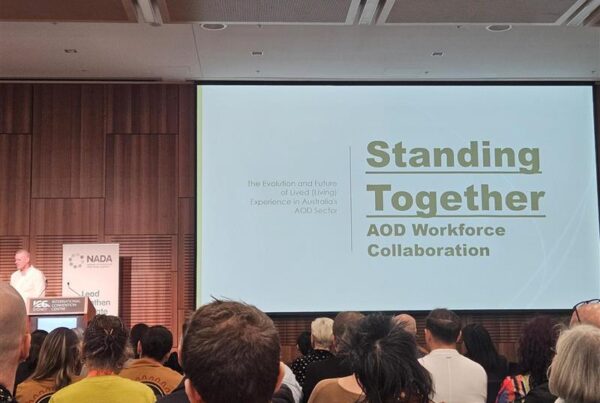By Phillip Mendes, Associate Professor, Department of Social Work, Faculty of Medicine, Nursing and Health Sciences
Popular depictions of drug use suggest that people who inject them come from all walks of life. In the 1980s, entertainer Debbie Byrne was often presented as the stereotypical middle-class heroin user, and the tabloid media still highlights stories of drug use at privileged private schools. Yet the reality is rather different.
There’s considerable historical evidence to suggest that most people who use heroin come from poor or socially disadvantaged backgrounds. There’s also evidence to suggest that many people who use drugs who come from middle-class or affluent backgrounds have experienced significant personal trauma involving violence, abuse, and/or grief.
The noted psychologist Isidor Chein found that Americans who used drugs were generally concentrated in areas characterised by low socioeconomic status, poor education, and high levels of family breakdown.
And David Courtwright, in his book Forces of Habit, cites research from Pakistan and India confirming that substance use is most prevalent among street children, dropouts, petty criminals, sex workers, the jobless, and other socially marginal groups.
Professor Joanne Neale from the National Addictions Centre, King’s College, London, found that people using drugs in Scotland had backgrounds characterised by family disruption, parents or siblings with substance use problems, childhood abuse, poor mental health, and teenage homelessness.
Similarly, the Swedish social work academic Ted Goldberg found that people from the “lowest social stratum” were markedly over-represented among those experiencing drug dependence.
Goldberg identified a number of factors that were likely to contribute to increased heroin use, including:
- high unemployment
- limited access to education
- segregated housing
- racism towards newcomers
- traumatic refugee experiences.
Other important psychosocial factors included parents who were alcoholics, experience of physical, sexual or emotional abuse, and poor family relations.
In Australia, research shares many of these assumptions.
The 1996 Victorian Premier’s Drug Advisory Council report identified drug use with socioeconomic disadvantage and emotional disorder. Marginalised young people lacking education or family support were considered to be particularly vulnerable.
The 2000 Victorian Drug Policy Expert Committee suggested that increased drug use and overdoses could be attributed to a number of factors, including:
- school withdrawal
- unemployment
- social isolation and economic inequality.
A Hanover Welfare Services report (1996) attributed drug use to “fractured family relationships, abuse, homelessness, and lives of poverty”.
And a report on street sex workers noted close connections between childhood abuse, homelessness, prostitution and substance use (Rowe 2003).
The report by Hanover summed it up succinctly:
“Sure, there are some well-heeled heroin addicts, a smattering of upwardly mobile and celebrity users. But you don’t see many of them amongst the haunted faces cruising streets in Footscray, St Kilda, Springvale, Dandenong and the CBD. We know by now that when you’re addicted to heroin, your life generally becomes a cheap theatre of constant hustling and scheming … It is a life of anguish and constant financial hardship … Jobless poverty and heroin are soulmates.”
More recently, a survey of people who use the Richmond Medically Supervised Injecting Room shows that they are more likely to:
- be unemployed
- reside in unstable accommodation or be homeless
- Identify as Aboriginal
- have been in prison in the past 12 months.
Read more: Supervised injecting facilities work, but is Melbourne ready for a second one?
Similarly, a surveyed group of regular users of Sydney’s King’s Cross injecting facility reported:
- 96% had a history of trauma
- 82% had a mental health diagnosis
- 54% had attempted suicide, and one third had a history of self-harm.
Thus, heroin use can potentially be seen by users as a solution to deep-seated social, economic, and emotional problems. Just as some of the mentally ill use heroin to self-medicate, so do many people appear to use heroin to relieve their emotional pain.

This connection is stated explicitly by Peter Norden, the director of Jesuit Social Services (JSS).
According to Norden, many of the young people involved in JSS programs have experienced considerable personal trauma, including sexual, physical, and emotional abuse at young ages.
Norden argues significantly that young people use drugs “in response to pain, suffering and isolation, not because they deliberately choose to behave in a self-destructive manner”.
The demonstrated relationship between problematic substance use and emotional pain suggests that any policy solution will need to involve positive social and emotional support, and opportunities that specifically address existing feelings of hopelessness and frustration.
Problematic substance use is particularly apparent in two disadvantaged population groups that I have researched.
One is young people transitioning from out-of-home care.
A number of studies have reported that young people in, and leaving, care are more likely to be involved in problematic substance use.
This doesn’t mean that most care-leavers use substances. But just as a disproportionate number of care-leavers are represented in the long-term homeless population, its likely that care-leavers form a high proportion of the long-term substance use cohort.
Read more: Advancing smoother transitions for those leaving residential out-of-home care
Our recent Sidney Myer-funded national study of Indigenous care-leavers found that some of that cohort struggle with alcohol and other drug use. Problematic substance use makes them more vulnerable to family violence, the removal of their children, homelessness, and involvement in the justice system.
Care-leavers are disproportionately exposed to key risk factors for substance use, including:
- experiences of abuse and neglect both prior to, and during, care
- poor housing and homelessness
- pre-existing mental health problems
- prenatal exposure to drugs.
Other contributing factors include exposure to parental substance use, early school exclusion and/or truanting, association with substance using peers, absconding from parental home or care placements, and earlier initiation of substance use.
It appears that many care-leavers use substances to self-medicate for the internal emotional pain brought about as a consequence of traumatic experiences such as the suicide of family members, and experiences of sexual assault, rape, physical assault, and bullying.
Substance use also seems to correlate with the absence of consistent caring relationships with carers and other adults while in care, punitive and inappropriate responses by workers to substance use, and premature and unplanned departures from care that compound substance use problems by causing unstable and transient living situations.
A second group at risk are those Australians of working age on unemployment payments – such as the JobSeeker allowance (particularly the long-term unemployed) – who are currently targeted by forms of conditional welfare.
They’re framed by policymakers as the undeserving poor who are assumed to have made bad individual choices (completely unrelated to any experiences of unfair social and economic structures) to engage in problematic substance use.
Firstly, there’s the longstanding targeting since 2007 of people allegedly involved in problematic substance use by the introduction of various compulsory income management (IM) measures, including most recently cashless debit cards affecting more than 40,000 people to date. A key assumption behind the IM program is that it will reduce forms of individual and community harm associated with alcohol and other (AOD) use, such as child abuse, crime, family violence, unemployment, and homelessness.
Yet our recent ARC-funded study in four income management (IM) sites reported that:
- many participants did not have pre-existing substance use disorders
- IM seems to have had limited impact on substance use in the targeted sites
- where some positive change has occurred, it was difficult to segregate the impact of IM from other discrete programs and policies introduced at the same time.
In particular, IM doesn’t address the complex underlying social, psychological and medical causes of AOD use, such as financial disadvantage, a history of childhood trauma, and poor mental health. Nor does it appreciate the many complex factors involved in pathways to addiction management or abstention.
Secondly, there’s the proposed introduction (to date not passed by the Upper House of the Commonwealth Parliament) of a two-year drug-testing trial aimed at 5000 new recipients of the JobSeeker allowance and youth allowance across three locations in NSW (Canterbury-Bankstown), Queensland (Logan), and Western Australia (Mandurah).
The trial aims to address substance use issues that act as barriers to employment.
However, as noted by a submission from the Monash Addiction Research Centre to an inquiry into the proposed trial, there’s no evidence that punitive measures will reduce drug use, or assist social security recipients to access employment or participate in education and training.

A structural solution to problematic substance use
Many writers offer a generic structural solution to illicit drug use based on the redistribution of wealth and income. For example, the respected British journal New Statesman argued that “inequality and poverty breed drug dependence”, and called for “a war on poverty, not on drugs”.
Similarly, Goldberg recommends a range of macro measures to reduce long-term demand for drugs focused on limiting social exclusion, and devising supports to compensate for deficits in schools, families, and the labour market. He argues that:
“… to the extent we can provide as many citizens as possible with the hope of a reasonable future, we will reduce the number of problematic consumers of narcotics.”
Making it personal … and structural
Generic formulas, however, do not specifically address the personal needs of people involved in substance use. It’s true that structural reforms may help prevent a new generation of young people being drawn into financial hardship, homelessness, social isolation, and potentially into drug dependence, but it’s unlikely that structural measures alone will help rehabilitate those whose personal traumas are driving their drug use.
The latter group requires both specific structural and personal assistance.
Structural assistance would involve improved access to holistic primary healthcare, housing and employment, education and training services.
Personal support would involve extending support well beyond the rehabilitation or withdrawal stage to offer ongoing counselling that addresses underlying emotional or psychological affliction.
Acknowledgements: An earlier version of this content was presented at a Monash Addiction Research Centre webinar on 16 June. Many thanks to Associate Professor Suzanne Nielsen, Deputy Director of the Monash Addiction Research Centre, for her input.
This article was first published on Monash Lens. Read the original article






